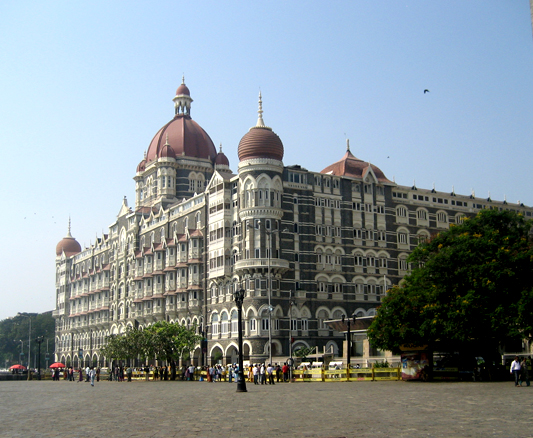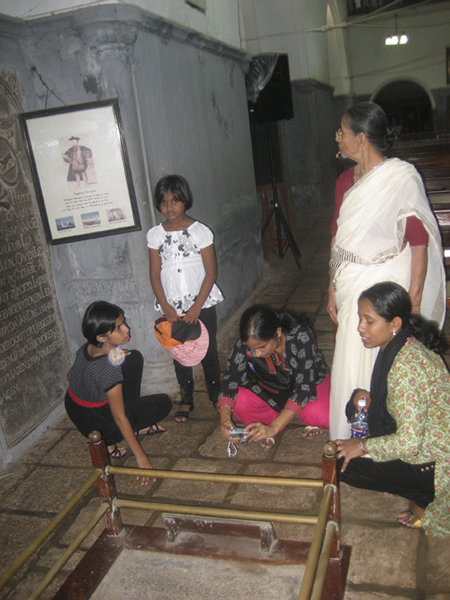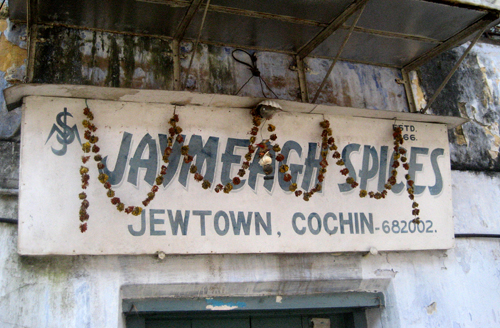
©2011, UrbisMedia
When I last saw the Gateway to India, way back in 1993 (from one of these rooms in the Taj Mahal Hotel (above), this was still Bombay. Mumbai, obviously preferred by the indigenous, doesn’t seem to work for me; I got my early “India” from Kipling, Forster, The Jewel In The Crown, and the first Indians I knew were Sabu and Gunga Din. I shouldn’t resort to colonial place-naming, but Bombay has an exotic charm to it.* (Madras changed its name, too, but who would wear a pair of Chennai shorts.)
Since then of course the venerable Taj Mahal was attacked and nearly burned down by Pakistani insurgents who sneaked in here by sea, but today shows no sign of the damage they inflicted. The Indian crowd throngs around this vestige of the British raj in the bright sun taking pictures, setting off on local ferries, many of them tourists from the hinterland.
This is my third time in India and things seem better this time. There are far fewer beggars, it seems. I have been told that rickshaws have been banned from the central area, and maybe the beggars have been as well, but there seems a bit more swagger in the Indian step this time, which may owe something to the economic success of recent years. Was that guy who was giving me tech support on the phone the same guy begging on the street in his underwear a few years ago? Not likely, then again maybe he is home practicing to be the next slum dog millionaire or crossover Bollywood star.
Other things have changed little, especially the teeming streets with their demolition derby traffic composed of every sort of vehicle, carts, and pedestrians in a non-Bollywood choreography of honking anarchy. There is enough dirt, dust and frenetic pace to test the tolerance of the most dedicated city lover. But there is something I like about it; the sheer urban energy, I guess.
There is another thing that is even more of a constant in India. My taxi driver, and Indian, but a Buddhist not a Hindu, spoke openly about it: the Hindu–Muslim enduring enmity. He put it in the context of the year when Mumbai receives many tourists from Arab countries. “Before they getting my taxi they ask me my religion. If I reply truthfully they will not hire my taxi. Sometimes I say ‘salaam alaikum’ and pretend to be a Muslim.” Hey, a guy has to make a living. He also tells me that he has a son working as an accountant in Massachusetts who has recently married Catholic girl. The man is required to be such an ecumenical juggler that I refrain from mentioning that I am a devout anti-theist.
A couple of weeks earlier when we had sailed about as close as you can get by water past Mecca I had wondered about the trajectory of Islam, as though a westerly wind carried the desert spawned faith all the way to the Pacific. Indeed, Arab dhows had anchored off Mumbai well before the ships of Western traders and their missionaries. Muslim zealotry seems to have tempered somewhat by the time it reached Malaysia and Indonesia, but here on the Indian subcontinent conversion to the faith of Mohammed by the sword or by the suicide bomber vest can yet make for even an uneasy taxi ride or a stay in the Taj Mahal.
Cochin
So when we call further down the Indian West Coast in the state of Kerala, there is the somewhat satisfying and exceptional encounter with my familiar old friend(?) Roman Catholicism. Why an exotic encounter with the faith I have long renounced (although perhaps not successfully abjured) should give me a warm feeling I cannot explain other than as that reflexive defense one tends to mount when one’s country, ethnicity or faith is criticized or attacked by the “outsider.”
Cochin is the site of the first Catholic church to be built in India, the church of St. Francis (1540). I would have to assume that it is St. Francis of Assisi and not St. Francis Xavier**who did not die until 1562, but is associated with the Catholic incursion into India and whose well preserved remains repose and Bom Jesus just up the coast in Goa. Of special interest in the church of St. Francis is the crypt in which once reposed*** the bones of the Portuguese navigator Vasco Da Gama, as important a figure in the opening of the Far East to commerce as was a Xavier to the eastward spread of Roman Catholicism. It was Da Gama’s rounding of it Cape of Good Hope in 1497 that supplanted the long, costly, and dangerous overland route to the East made famous by the Polos.
The great mariner’s crypt lies, with little display or evident ceremony beneath the floor of a side aisle off the nave of the church. Only a low brass railing around the perimeter of the stone covering prevents the visitor from simply walking over it. Indian families pose for photos next to it and a small plaque describing the navigators claim on history. I had to ponder that we had recently passed through the Suez Canal that opened 372 years later, and cut 5000 miles off the trip to the Far East and subsequently supplanted Da Gama’s achievement.

©2011, UrbisMedia
Here again I had a sense of the ecology of religious belief. Much of that in this part of the world has been transported partly like stowaway seeds in the holds of commercial vessels, but also as a vanguard of commercial insurgency and eventually cultural domination and political hegemony. In the case of Cochin, at least in the days of my visit, there seems (for the moment at least) an irenic spatial accommodation to religious diversity. Some neighborhoods have their mosques, others their temples, still others their churches. There is even a synagogue in the section of town that bears the seemingly politically-incorrect name “Jewtown.” I snicker, and Nofi, my tuk-tuk driver wonders why. I don’t ask his religion (and he didn’t volunteer it), but I just reply that it’s a story that goes back as far as 70 A.D. when my ancestors had a nefarious role it all of this.

©2011, UrbisMedia
____________________________________________________________
©2012, James A. Clapp (UrbisMedia Ltd. Pub. 11.4.2011)
*And a lurking danger as well. It nearly got me killed back in ’93. See DCJ Archives 54. 1: DEATH IN BOMBAY; DEATH IN MUMBAI 12.01.2008
**See Xavier’s Toe, Chapter VII.1, in Clapp, THE STRANGER IS ME: Travels and Self-Discoveries(2007)
***They were only there from 1534 to 1538, when they were brought back to Portugal. Oh, well . . . .
